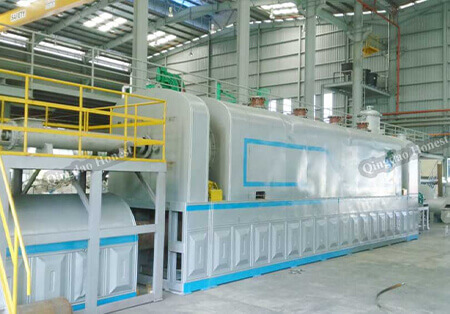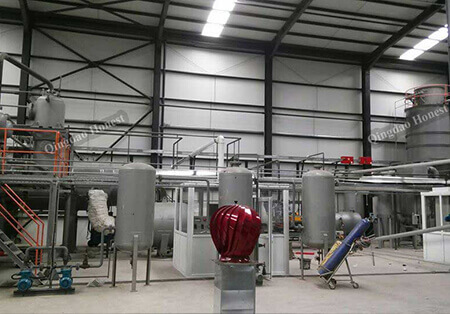
Have you ever stopped to think about what happens to all that plastic waste piling up? Pyrolysis just be the game-changer we’ve been waiting for. This process turns waste into something useful, like fuel or new materials. In this post, we’ll break it down step by step. We’ll cover what pyrolysis really is, how it fits into plastic recycling, and answer some burning questions. If you’re a business owner dealing with waste or just curious about green tech, stick around. We’ll make it clear and practical.
At its core, it’s a way to break down materials using heat without oxygen. No burning involved. That keeps things from turning to ash.
Picture this: you heat up organic stuff like wood or plastic in a sealed chamber. Without air, it doesn’t catch fire. Instead, it decomposes into gases, liquids, and solids. In simple terms, pyrolysis splits long molecule chains into shorter ones. For plastics, that means turning polymers back into oils or gases. It’s like reversing the manufacturing process. Heat does the heavy lifting, usually between 400°C and 600°C.
Burning waste? Landfilling? Pyrolysis stands out because it’s cleaner. No oxygen means less pollution. Plus, you get valuable byproducts. Compare it to composting, which works for food but not plastics. Or mechanical recycling, where you melt and reshape—but that only handles clean, sorted plastics.
Pyrolysis tackles mixed, dirty waste. It’s flexible.
Billions of tons produced since the 1950s, and only a fraction gets recycled. Pyrolysis steps in here.
First, collect the waste plastics—bags, films, bottles, whatever. Shred them to make feeding easier.
Next, load into a reactor. Heat ramps up in an oxygen-free environment. Plastics break down into vapors. These condense into pyrolysis oil, or pyoil. What’s left? Carbon black and gases.
The oil can be refined into fuels or chemicals for new plastics. Gases? They often power the process itself. Carbon black goes into tires or inks.
Take a typical setup: a rotary kiln reactor, like those used in Chinese systems. It rotates slowly, ensuring even heating. Catalysts sometimes speed things up, improving yields.
Prep Stage: Sort and shred plastics to uniform size.
Heating Phase: 400-500°C, no oxygen, for 1-2 hours per batch.
Cooling and Collection: Vapors cool into liquid oil; solids scraped out.
Refining: Oil distilled for purity.
Yields vary. Expect 45-50% oil, 30-35% carbon black, and 10-15% gas from mixed plastics.
It handles what mechanical recycling can’t. Flexible plastics like pouches or foams? No issue. It reduces landfill use and cuts fossil fuel demand. Pyoil replaces crude oil in making new plastics, closing the loop.
Environmentally, it’s a win. Less mining for oil. Lower emissions than incineration. In a circular economy, this keeps plastics in use longer. Think about it: one ton of waste plastic yields about 800 liters of oil. That’s fuel for vehicles or heating.
But it’s not perfect. Energy input is high, and setups cost money upfront. Still, payback comes from selling products.

No tech is flawless. Pyrolysis needs steady waste supply. Sorting helps, but not always required. Emissions? Modern scrubbers handle them.
Looking ahead, innovations cut energy use. Catalysts boost efficiency. In China, policies push recycling, boosting adoption.
Globally, it’s growing. Companies blend pyoil with fossil fuels. Mass balance tracking ensures recycled content claims hold up.
For you, if waste plastic burdens your operation, pyrolysis could turn it profitable.
Qingdao Xingfu Energy Equipment Co., Ltd. stands as a top supplier of plastics pyrolysis systems. Specializing in waste tire and plastic setups, they offer batch, semi-continuous, and fully continuous models—from 8-ton semis to 30-ton full runs.
With 380 staff, including 78 tech experts and 136 skilled workers, they hold ASME, CE, and ISO9001 certifications. Honors include “outstanding boiler-making enterprise” and “Shandong Star Enterprise.”
Fixed assets hit 66.8 million, backed by advanced gear and strict checks. Communist Party leaders have praised their work. If you’re eyeing reliable pyrolysis tech, Xingfu delivers quality and support.
Pyrolysis isn’t just a buzzword—it’s a real fix for plastic waste headaches. By turning trash into oil, carbon, and gas, it cuts pollution and creates value. We’ve seen how it works, its perks, and standout Chinese systems. Whether you’re recycling at home or scaling a business, this tech points to a cleaner future. Dive in, and you might find it transforms your approach to waste.
Yes, there are several types including batch, continuous, catalytic, and those using different reactor designs like fluidized bed or rotary kiln.
It reduces landfill use and emissions. Pyrolysis in plastic recycling yields valuable products—45-50% oil for fuels, plus carbon black for industries.
Compared with traditional mechanical recycling technology,pyrolysis goes further, handling mixed waste via heat decomposition. It supports a circular economy in plastic recycling by producing raw materials like pyoil.
Big ones: varying feeds causing inconsistent yields, corrosion eating gear. Solutions? Pre-sort plastics, use tough alloys. In challenges and solutions for pyrolysis of plastics, catalysts steady the process.
Upfront cost higher for continuous pyrolysis plant, but long-run eco-friendly perks—like lower emissions—outweigh. Batch system’s simpler, but energy hogs more.